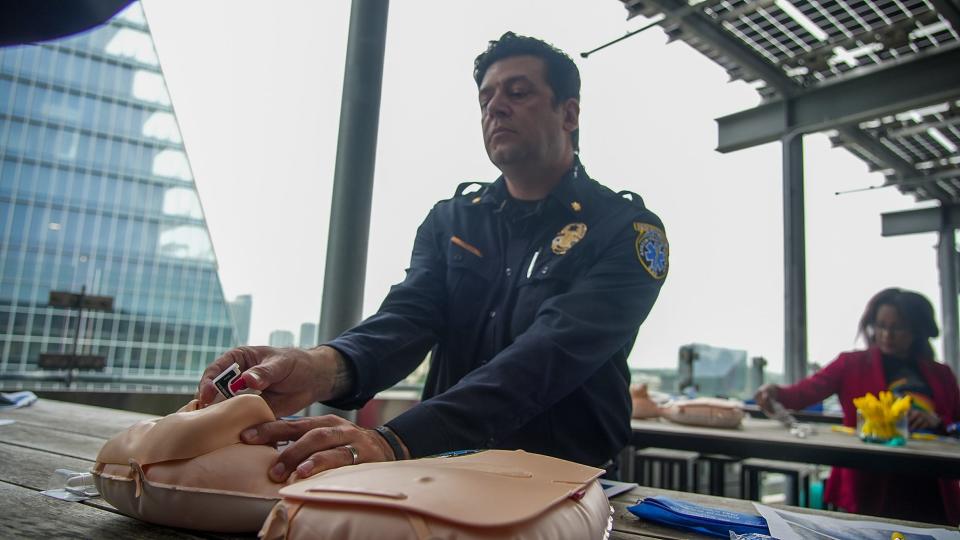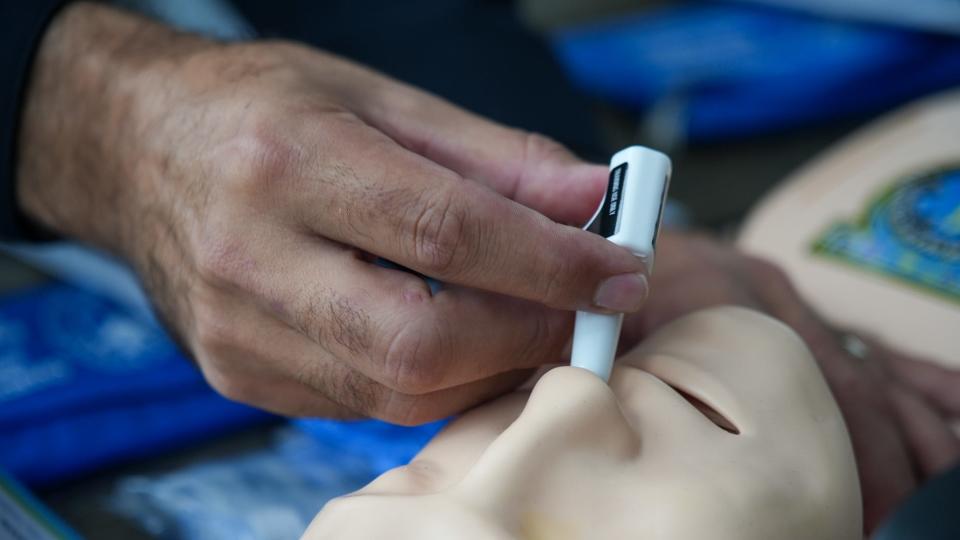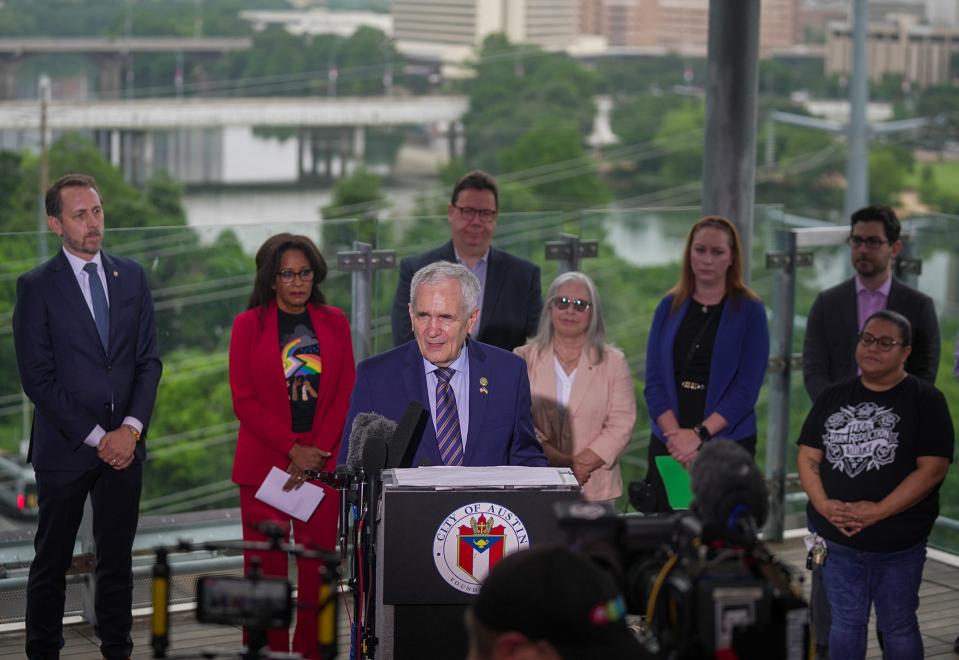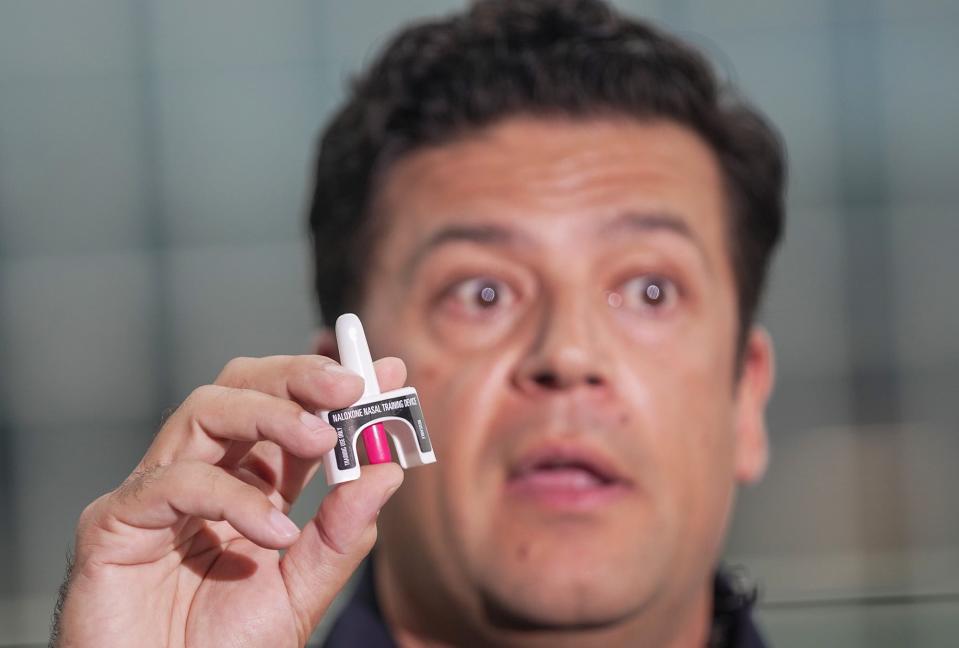Do you know how to use Narcan? Austin health officials demonstrate
Two weeks ago, Austin had a more than 1,000% increase in overdoses caused by fentanyl-laced drugs. Seventy-nine calls came in five days, with nine deaths.
It is an ongoing trend that continues to make overdoses Travis County's No. 1 cause of accidental deaths, county and Austin-Travis County Emergency Medical Services officials said Monday.
City, county and federal officials, along with community groups, demonstrated Austin-Travis County EMS' Breathe Now program, which trains people on how to use the reviving medication naloxone — known by its brand name Narcan — and then provides a kit with two doses of naloxone, a resource guide and a barrier to do mouth-to-mouth resuscitation in a safe way.
Naloxone only works on someone experiencing an opioid overdose, but it is not dangerous to give to someone who is not having an overdose. Giving someone naloxone cannot get you or the person in trouble legally, said Austin-Travis County EMS Chief Robert Luckritz.

The Breathe Now program is conducting trainings for public officials, workers at city libraries and parks, and community groups. Kits will be on hand at public libraries and city park buildings and will be distributed to areas where known overdoses have happened. Anyone who wants to receive training for a group can email preventoverdose@austintexas.gov.
"The more people we train and equip in our community, the greater the chance we have of saving lives and preventing tragedy," Austin Mayor Pro Tem Leslie Pool said.
"It's going to take all of us to get through this crisis," Travis County Judge Andy Brown said Monday.
The money for this program and the distribution of 7,500 more kits comes from $2 million in federal funding from the Substance Abuse and Mental Health Services Administration to Austin Public Health that was announced in January 2023.
The recent rash of opioid overdoses "was a stark reminder of the dangers of opioids and the need for communitywide intervention," said Dr. Desmar Walkes, the public health authority at Austin Public Health.

The administration of naloxone throughout the community made a difference in those overdoses. Luckritz said two weeks ago, 80% of the people EMS treated for fentanyl overdoses already had been given naloxone by someone before EMS arrived.
"That is a testimony to our efforts to distribute Narcan kits throughout the community in order to save lives," Luckritz said.
An additional 400 kits were distributed as the overdoses were happening, he said.
The funding has also helped expand the outreach team and peer support specialists at Communities for Recovery and Texas Harm Reduction Alliance and training of emergency department and primary care medical staffers through the University of Texas' Pharmacy Addictions Research and Medicine Program and a new communications campaign through the UT Center for Health Communication.
U.S. Rep. Lloyd Doggett, D-Austin, who secured the $2 million, is looking for more money as the current funding wanes. He's also backing a bipartisan federal bill to make fentanyl test strips no longer considered drug paraphernalia and supports the state Legislature taking up a similar bill in 2025.
"We need to save as many lives as possible," he said.

Know the signs of an overdose
People experiencing an overdose have systemic problems in their body. They are:
Not responsive or less responsive.
Drowsy.
Pinpoint pupils in their eyes.
Difficulty breathing, slow or no breathing.
Discoloration of fingertips, such as a blue tinge.
Learn more: 'A lifesaver': EMS opioid withdrawal program helps 500th person ease off drugs
What to do if you find someone you think is overdosing
Call 911 to get help on the way.
Administer Narcan.
Check for a pulse. Administer CPR if there is no pulse.
Wait until help arrives.

How to use Narcan
Naloxone can be purchased at most pharmacies. People who have Central Health's MAP insurance card can get it for free at CommUnityCare and H-E-B pharmacies. It's also available free through vending machines and will be in libraries and public park buildings.
Naloxone should be stored at room temperature (so not in a hot car during Austin's summers). You should check the expiration date, but giving expired Narcan is better than giving no Narcan.
Narcan works just like a nasal allergy spray:
Put the Narcan tip inside a nostril and push it up as far as it can go.
Press the plunger down to release the spray.
Roll the person on their side so if they vomit, they will not choke.
Stay with the person but give them some space. When they become responsive, they might be confused.
If after three to five minutes they are not better, give a second dose.
Wait until EMS arrives.
This article originally appeared on Austin American-Statesman: What is Narcan? Austin health officials lead fentanyl overdose training

